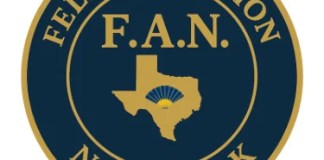Subcultures offer a way to connect with others who have shared interests. And it’s easier than ever for individuals to find the right subcultures thanks to digital connections and a desire to belong. Members of subcultures bond over values and activities, and they demonstrate their connection through symbols that can be worn or displayed. Anything from clothing patches to coins can represent one’s link to a subculture. And for subcultures that exist largely over digital modes of communication, symbols can be an important tangible reminder that someone is part of a community.
Keep reading to learn more about how symbols shape modern subcultures.
Binding Communities Together with Patches
Symbols are a visible sign of one’s affiliation with a particular subculture. Symbols may feature images, text, or designs that represent a group’s beliefs or sense of style. Moreover, how these symbols are displayed can be just as important as the symbols themselves.
For some communities, fabric patches are the symbols of choice to make a statement and show allegiance to a particular group. Hard rock subcultures might choose to display fabric patches on vests or leather jackets, for instance. Similarly, biker subcultures may adorn riding jackets with contrasting patches that can look striking on the open road. A patch might show a biker’s connection to a particular club. As another example, punk subculture members may use patches on ripped jeans or shirts to endorse their favorite bands and express a sense of individualism.
Turning to Tradition with Coins
Some subcultures opt for symbols with lasting value and physical heft. While patches can fray and fade, coins are an enduring choice. They mimic the feel of a trophy, serving as a reward and display of achievement.
Challenge coins, in particular, have taken hold as popular symbols in subcultures as varied as gaming clubs and professional organizations. Once more closely aligned with the military, challenge coins have expanded their reach. Even when digital communications and connections dominate interactions in today’s modernized world, traditional and tangible symbols, like challenge coins, remain an excellent option. Their throwback appeal and potential for engraved customization make them a popular way to show belonging and loyalty to a group. Challenge coins can demonstrate loyalty to an organization or honor someone’s rank or achievements. To learn more about the history of these symbols, read this Intro to Challenge Coins.
Embracing Digital Symbols
Gaming subcultures rely on digital communication above all others. It’s only fitting that individuals in this community would use digital symbols to express their sense of belonging. Avatars and badges are among the popular digital symbols used to denote someone’s affiliation with certain games or fandoms.
But digital symbols aren’t the only options for gamers. Increasingly, gaming-focused swag has crept into the symbolic landscape. Gamers are sporting pins and patches that market their favorite games and systems. Some gamers are using custom consoles and gaming setups to honor their commitment to the gaming community. And when these individuals attend the next DreamHack or TwitchCon decked out in the latest game-focused swag, they’ll be ready to engage with other attendees.
Showing Connections Through Streetwear
Sneakers and hoodies are more than basic components of a wardrobe for fashion-aware individuals. A hoodie branded with a specific logo can connect someone to the company’s mission and values. A pair of sneakers can indicate a connection to skating culture or a celebrity’s brand. Streetwear repackages recognizable symbols to create new ones that signify status and belonging. And with the help of social media, it’s easy for these streetwear symbols to become sought-after statements that bring people together..
The Value of Symbols
Whether patches or coins, symbols hold a potent presence that unites people around the world. While they may seem like decorative items, their meaning is far richer. Symbols communicate someone’s beliefs, as well as their interests, cultural affiliation, and achievements. They can help preserve the history of a longstanding organization or announce a new subculture that’s starting to gain traction. In short, symbols are a physical expression of who someone is. Individuals eager to find a sense of community or endorse a set of values can use symbols to share who they are with the world.
Great Job Our Culture Mag & Partners & the Team @ Our Culture Source link for sharing this story.





